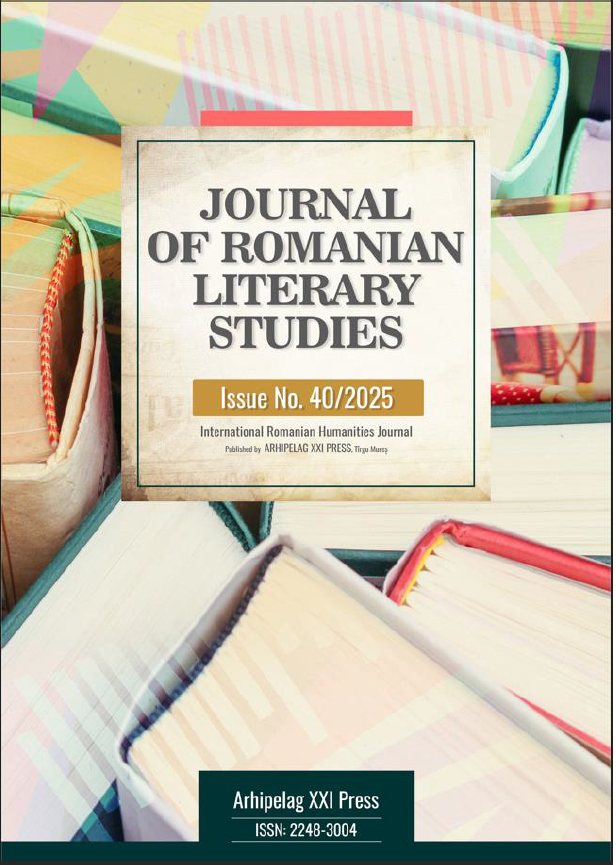EXPLICIT AND IMPLICIT MANIFESTATIONS OF GENDER IN SCHOOL TEXTBOOKS: MALE AND FEMALE CHARACTERS
EXPLICIT AND IMPLICIT MANIFESTATIONS OF GENDER IN SCHOOL TEXTBOOKS: MALE AND FEMALE CHARACTERS
Author(s): Nicoleta-Cristina SâmceaSubject(s): Social Sciences, Language and Literature Studies, Gender Studies, Education, Sociology, School education, Adult Education, Educational Psychology, Philology, Sociology of Education, Pedagogy
Published by: Editura Arhipelag XXI
Keywords: textbook; gender; stereotypes; women; men;
Summary/Abstract: School is not only a means of transforming lives but also a mechanism for organizing them. It plays a key role in shaping social structures, including gender relations. Schools prepare students for the gendered division of labor, both at home and in the workplace, actively producing and reinforcing gender norms rather than merely reflecting existing social ideologies. According to Barrie Thorne, gender identities, masculinity, and femininity are socially constructed through various influences, including family, peers, media, and educational content. One crucial instrument in this process is the textbook, which communicates ideas about gender norms and roles selected from cultural and historical sources. Given its significant impact on shaping students’ perceptions, it is essential to analyze and evaluate textbooks for gender representation. Textbooks create a symbolic world where children spend hours daily, forming ideas about what is normal, acceptable, and appropriate. They serve as "training grounds" for real-life social roles. This study examines how gender is constructed in high school Romanian language and literature textbooks, comparing materials from before and after 2000. The research aims to determine whether these textbooks reinforce gender stereotypes explicitly or implicitly, despite existing non-discriminatory legislation. Main research question: Do Romanian language and literature textbooks reinforce gender stereotypes? Specific research problem: Do textbooks influence students’ behavior and perceptions of gender roles through the experiences they provide in formal education? Hypothesis: Despite non-discriminatory legislation in Romania, gender stereotypes persist in textbooks, both explicitly and implicitly. Methodology: The study analyzes four high school textbooks: two from the 1980s-1990s and two from the 2000s. The analysis focuses on gender representation in illustrations and text, identifying differences and similarities in how gender roles are portrayed over time. The research investigates the following:• The presence of male and female characters in illustrations• Gender-coded traits and behaviors• Gender-based interaction patterns• Representation of power and authority• Gender stereotypes in visual and textual content A total of 572 illustrations were examined, documenting gender representation through empirical indicators such as visibility, authority, stereotype reinforcement, and interaction patterns. Findings1. Gender representation in illustrations• Male characters dominate the visual content: 62% of illustrated characters are male, while 38% are female.• The most significant disparity appears in Manual 3, where 82% of illustrations feature males and only 18% feature females.• No textbook contains more female than male characters.2. Gender interaction and segregation• 78% of mixed-gender illustrations show interaction between male and female characters, suggesting no strong gender segregation.784• Male characters interact more frequently than female characters, reinforcing an active male/passive female dynamic.3. Representation of power and authority• Male characters appear more often in leadership roles, making decisions or guiding others.• Female characters are more frequently depicted as obedient or in subordinate roles (28 cases vs. 15 for males).• Men are portrayed as stronger and more independent, while women are associated with care and emotional support.4. Gender stereotypes and non-stereotypical representations• Traditional gender stereotypes dominate: men engage in public and professional activities, while women are shown in domestic roles.• Few counter-stereotypical representations exist, such as men engaging in household tasks or women participating in technical fields.5. Clothing and technological representation• Female characters predominantly wear dresses and skirts (74%), reinforcing traditional femininity.• Textbooks fail to reflect modern technological realities, with minimal references to contemporary devices like computers or mobile phones, even in post-2000 editions.6. Spatial representation (public vs. private space)• Men appear more frequently in public settings (30% of illustrations), reinforcing the idea of male dominance in professional and societal roles.• Women are more evenly distributed between public (36%) and private (26%) spaces, although some textbooks still emphasize traditional female domesticity. The study highlights several key patterns in gender representation in Romanian language and literature textbooks:• Male characters are overrepresented both numerically and in leadership roles.• Gender interaction is common, reducing segregation but maintaining male dominance in activity and authority.• Stereotypes persist, with women often confined to traditional domestic roles.• Textbooks shape gender identity by reinforcing societal norms through visual and textual content. Despite some progress, Romanian textbooks remain gendered instruments, subtly influencing students’ perceptions of masculinity and femininity. To foster a more equitable educational environment, future textbook revisions should actively address gender bias and promote diverse role models.
Journal: Journal of Romanian Literary Studies
- Issue Year: 2025
- Issue No: 40
- Page Range: 783-793
- Page Count: 11
- Language: Romanian

